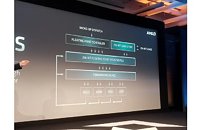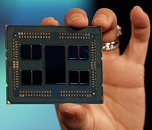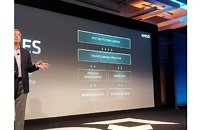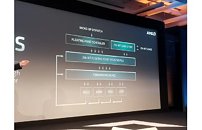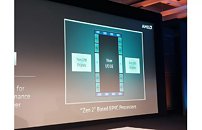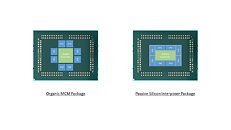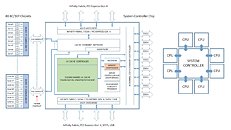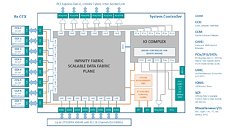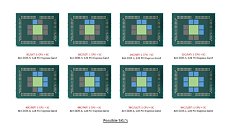
Stuttgart-based HLRS to Build a Supercomputer with 10,000 64-core Zen 2 Processors
Höchstleistungsrechenzentrum (HLRS, or High-Performance Computing Center), based in Stuttgart Germany, is building a new cluster supercomputer powered by 10,000 AMD Zen 2 "Rome" 64-core processors, making up 640,000 cores. Called "Hawk," the supercomputer will be HLRS' flagship product, and will open its doors to business in 2019. The slide-deck for Hawk makes a fascinating disclosure about the processors it's based on.
Apparently, each of the 64-core "Rome" EPYC processors has a guaranteed clock-speed of 2.35 GHz. This would mean at maximum load (with all cores loaded 100%), the processor can manage to run at 2.35 GHz. This is important, because the supercomputer's advertised throughput is calculated on this basis, and clients draw up SLAs on throughput. The advertised peak throughput for the whole system is 24.06 petaFLOP/s, although the company is yet to put out nominal/guaranteed performance numbers (which it will only after first-hand testing). The system features 665 TB of RAM, and 26,000 TB of storage.
Apparently, each of the 64-core "Rome" EPYC processors has a guaranteed clock-speed of 2.35 GHz. This would mean at maximum load (with all cores loaded 100%), the processor can manage to run at 2.35 GHz. This is important, because the supercomputer's advertised throughput is calculated on this basis, and clients draw up SLAs on throughput. The advertised peak throughput for the whole system is 24.06 petaFLOP/s, although the company is yet to put out nominal/guaranteed performance numbers (which it will only after first-hand testing). The system features 665 TB of RAM, and 26,000 TB of storage.



